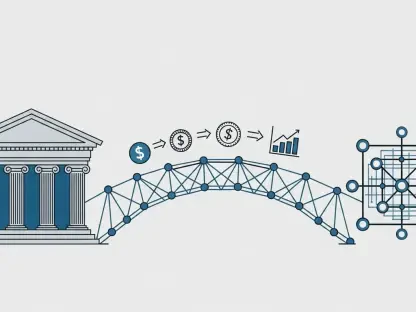In the shadowy corners of the internet, where anonymity reigns supreme and criminal activity thrives under layers of encryption, the dark web poses a formidable challenge to law enforcement and cybersecurity experts. For years, tracking down threat actors in this hidden digital realm has been like finding a needle in a haystack, with investigators piecing together fragmented clues across countless forums and marketplaces. However, a groundbreaking development in artificial intelligence is changing the game. A cutting-edge AI tool, recently unveiled by a leading cybersecurity firm, promises to transform the painstaking process of dark web investigations. By harnessing vast data reserves and automating complex analyses, this technology offers a lifeline to those combating online crime. It’s a pivotal moment that underscores how AI can illuminate even the darkest corners of the web, providing hope for faster, more effective responses to cyber threats that impact global security.
Unveiling AI’s Power in Dark Web Analysis
The introduction of an innovative AI capability within a specialized dark web investigation platform marks a significant leap forward for law enforcement and cybersecurity professionals. Known as an AI Agent, this tool taps into an extensive data lake spanning over a decade of dark web activity to produce automated, detailed summaries of threat actor behaviors. These summaries distill an overwhelming volume of information into actionable insights, covering critical aspects such as posting patterns, digital identifiers like email addresses and messaging handles, and even marketplace-specific details for vendors, including goods sold and customer feedback. This automation drastically cuts down the time traditionally spent on manual data collection, enabling investigators to focus on high-level strategy rather than sifting through endless threads of encrypted chatter. The result is a clearer, more comprehensive picture of criminal operations that would otherwise remain obscured by the dark web’s inherent anonymity.
Beyond just saving time, the true strength of this AI-driven approach lies in its ability to connect disparate dots across the dark web’s sprawling landscape. By analyzing interactions, associations, and behavioral trends, the tool uncovers hidden links between threat actors and their activities, often revealing new leads that might have gone unnoticed. For instance, it can identify overlapping aliases or shared digital footprints across multiple platforms, helping to build robust profiles of individuals or networks. This level of contextual understanding is invaluable, as it allows investigators to prioritize threats based on relevance to specific cases, rather than getting bogged down by irrelevant data. Moreover, the integration of open-source intelligence and credible reports enhances the reliability of the insights provided, ensuring that the information is not only comprehensive but also trustworthy. Such advancements signify a shift toward smarter, more precise investigative methods in an arena where precision is paramount.
Enhancing Efficiency and Strategic Focus
One of the most pressing challenges in dark web investigations has always been the sheer volume of data that must be processed to identify meaningful patterns. The newly developed AI Agent addresses this head-on by automating the synthesis of complex information into concise overviews, effectively streamlining what was once a labor-intensive task. This efficiency is not just about speed; it’s about empowering analysts to allocate their energy toward decision-making rather than data aggregation. Experts in the field have noted that this technology can shave hours off investigation timelines, a critical advantage when dealing with fast-moving cyber threats. By providing a unified view of a threat actor’s activities, including their interactions and operational scope, the tool ensures that investigators can quickly assess the significance of a target and adapt their approach accordingly, making every moment count in high-stakes scenarios.
Furthermore, the broader implications of this AI integration reflect a growing trend in cybersecurity toward automation and advanced analytics. As criminals continually evolve their tactics to evade detection, staying ahead requires tools that can keep pace with such adaptability. This AI solution exemplifies how technology can turn the tables, offering a proactive rather than reactive stance against dark web crime. It equips teams with the means to anticipate potential threats by identifying emerging patterns or shifts in behavior, thereby enhancing overall preparedness. The emphasis on context also means that investigations are not just faster but more informed, with insights that go beyond surface-level data to reveal the deeper networks and motivations driving illicit activities. This strategic edge is essential in a digital landscape where threats are as dynamic as they are dangerous, positioning AI as a cornerstone of modern cybercrime prevention.
Shaping the Future of Cybercrime Response
Looking back, the deployment of AI in dark web investigations proved to be a transformative milestone for law enforcement and cybersecurity teams. It redefined the approach to tackling online crime by automating intricate profiling tasks and delivering critical insights with unprecedented speed. The ability to distill vast datasets into actionable intelligence empowered investigators to respond to threats with greater precision, disrupting criminal networks that once operated under the veil of anonymity. This technological leap also set a precedent for how automation could address evolving challenges in the digital realm, highlighting the necessity of innovation in the fight against cybercrime.
Moving forward, the focus should shift to ensuring that such AI tools remain adaptable to new evasion tactics employed by threat actors. Continuous updates and integration with emerging technologies will be crucial to maintain their effectiveness. Additionally, collaboration between cybersecurity firms and law enforcement must deepen to refine these tools based on real-world feedback and case outcomes. Exploring ways to expand access to such advanced solutions for smaller agencies could also democratize the fight against dark web crime. Ultimately, the journey ahead involves building on this foundation to create a more secure digital environment, where AI serves as both a shield and a spotlight against the hidden threats of the internet.









